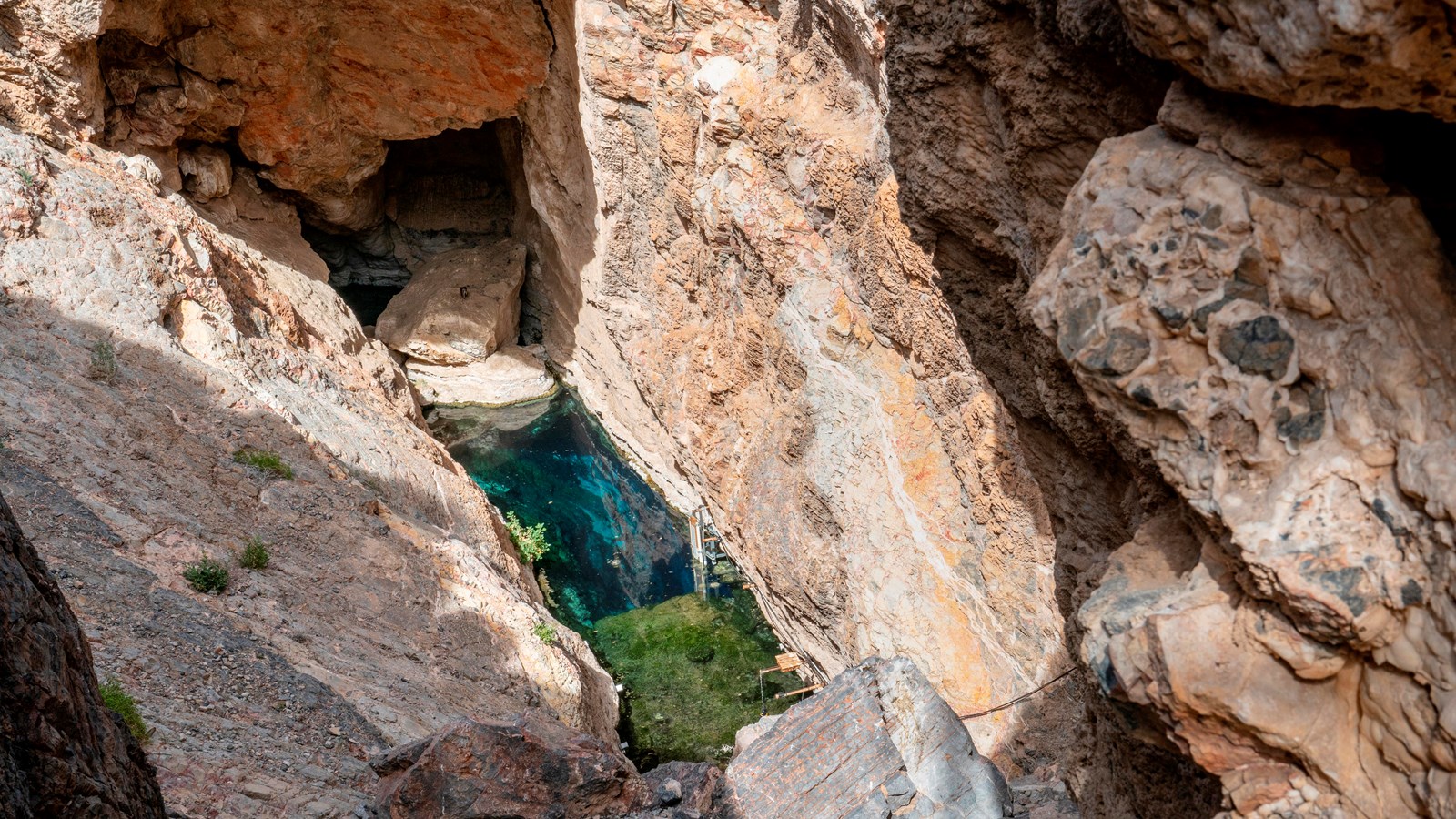Last updated: October 10, 2024
Place
Devils Hole

Kim Stringfellow 2019
Historical/Interpretive Information/Exhibits, Trailhead
Devils Hole, a disjunct portion of Death Valley National Park, is a water-filled, geothermal cave system and the only natural habitat for the highly endangered Devils Hole pupfish (Cyprinodon diabolis).
Devils Hole is nestled within the Ash Meadows National Wildlife Refuge, an incredibly biodiverse, spring-fed oasis in southern Nevada. The calm, carbonate-rich and oxygen-poor water of Devils Hole is a constant 33.5–34°C (93°F) in the deeper reaches of the cave and is often even warmer in the shallows. This combination creates a challenging environment for the tiny blue Devils Hole pupfish! These fish subsist on algae, invertebrates, and other micro-organisms found on a shallow rock shelf within the pool.
The water level in Devils Hole was protected by the United States Supreme Court in 1976 to help ensure the ongoing survival of this unique fish. With only about 100–180 individuals remaining in the wild, scientists continue their efforts to conserve the species for this and future generations to learn from and enjoy.
Ash Meadows is located approximately 50 miles east of the Furnace Creek Visitor Center in Death Valley and 90 miles northwest of Las Vegas. The refuge and Devils Hole are accessed via Spring Meadows Road. Refuge roads are dirt and gravel, and higher clearance or 4-wheel drive vehicles may be required depending on conditions.
Due to the sensitive nature of Devils Hole, the pool is fenced and must be viewed from afar; bring binoculars to better see the tiny fish from the Devils Hole viewing platform. For a closer look at desert pupfishes, be sure to check out the other pools and species on the refuge!
